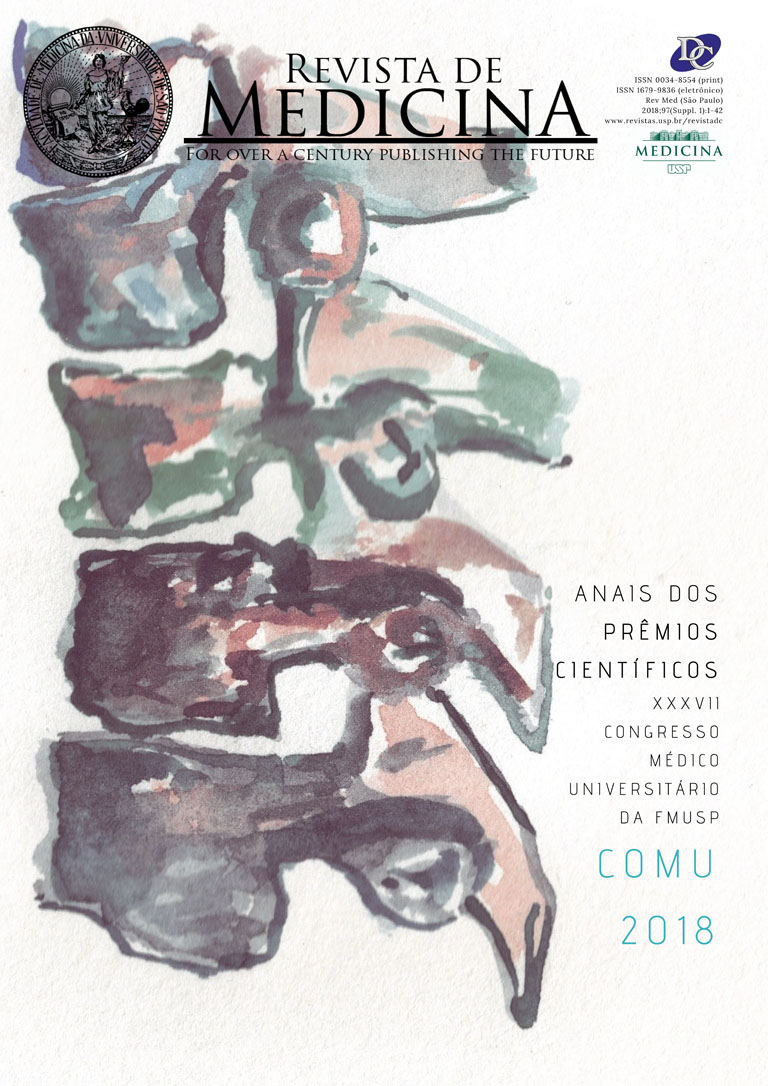Gut microbial metabolite increases skeletal muscle regeneration through epigenetic mechanisms
DOI:
https://doi.org/10.11606/issn.1679-9836.v97iSuppl.1p19-20Palavras-chave:
Camundongos, Músculo esquelético, Epigenômica, Células-Tronco, ButiratosResumo
Introduction: Reduction in skeletal muscle regeneration capacity, such as in inflammatory muscle diseases and aging, leads to progressive muscle strength decrement, which impairs mobility and increases risk of falls and mortality, with a negative impact of quality of life. This reduction in skeletal muscle regeneration has been associated with an impaired function of the skeletal muscle stem cells, namely, the satellite cells. These cells are localized beneath basal lamina in a quiescence state and can be activated and differentiated into new myofibers after muscle damage. Indeed, satellite cells need to exit the cell cycle for differentiation. Therefore, the search for biological tools that can improve activation/differentiation of satellite cells is of great interest to regenerative medicine. In this regard, butyrate, a gut microbial metabolite, which can induce cell cycle arrest through histone deacetylase inhibition, has emerged as a therapeutic tool in some diseases, such as cancer. Then, we hypothesize that butyrate could improve skeletal muscle regeneration by accelerating satellite cells
differentiation into myofibers through epigenetics mechanisms related to cell cycle exit. Objectives: To assess whether butyrate could improve skeletal muscle regeneration after barium chloride damage and its epigenetics mechanisms. Methods: Twenty C57Bl/6 male mice (CEUA: 133/2014), with 8 weeks of age, were grouped as follows: (1) control group with no injury + saline (C-Sal); (2) control group with no injury + butyrate (CBut); (3) injury with saline (I-Sal);
and (4) injury + butyrate (I-But). The muscle injury was performed with the injection of 50 μL of barium chloride (1.2%) in both tibialis anterior and the muscles were harvested six and twelve days after injury for histological and molecular analyses. Butyrate were injected intraperitoneally (400 mg/kg) for 6 days. For in vitro assays, primary satellite cells were isolated and cultured as myoblasts. Myoblasts were treated with 300 μM of butyrate during proliferation and differentiation conditions in order to assess cell cycle molecules, differentiation index, and epigenetics mechanisms. The significance was assumed when P < 0.05. Results: Skeletal muscle regeneration, assessed by cross-sectional area of tibialis anterior muscle, was higher in I-But than I-Sal group (P < 0.05). Histogram analysis also showed higher frequency of smaller fibers in I-Sal than I-But group (P < 0.05). In vitro analyses showed a reduction in the myoblasts proliferation when treated with butyrate (P < 0.05). Also, butyrate treatment downregulated genes related to cell cycle activation (cdk1, cdk2, cdk4), and up-regulated genes related to cell cycle repression (p57) (P < 0.05). The myotubes differentiation, assessed by fusion index, were higher in myoblasts treated with butyrate (P < 0.05), which was followed by an upregulation of the myogenic marker of differentiation, myogenin (P < 0.05). Moreover, butyrate was able to decrease histone deacetylase (P < 0.05) and increase histone acetyltransferase enzymatic activities (P < 0.05). Conclusion and discussion: Butyrate increased skeletal muscle regeneration in mice by accelerating the myotubes differentiation through induction of cell cycle arrest in myoblasts. Preliminary data suggested that this improvement was epigenetically mediated.
Downloads
Downloads
Publicado
Edição
Seção
Licença
Copyright (c) 2018 Revista de Medicina (São Paulo)

Este trabalho está licenciado sob uma licença Creative Commons Attribution-ShareAlike 4.0 International License.




